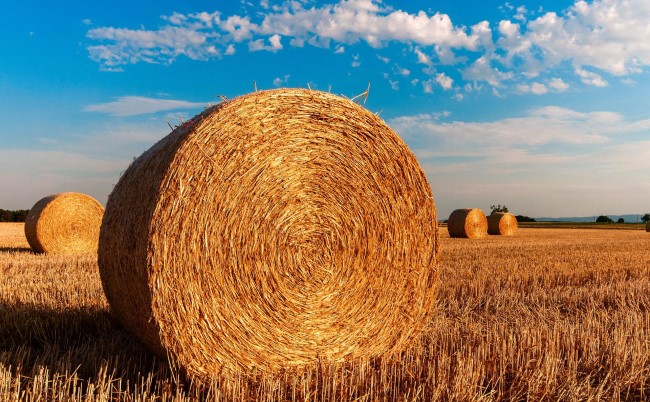
When I first started homesteading, I didn’t know the difference between hay and straw. Not because I was uneducated; it’s just not something a suburban kid would ever have known. I had country cousins whom I visited, and my uncle even raised quail at our house. It was just something that I never caught onto. The fact that most of the visitors to my house don’t know the difference either makes me feel better about myself, but worse about our future. We can name each Kardashian, but not the several types of hay? Humanity may be doomed. Just kidding. Sort of.
So for those of you who don’t know the difference, here it is in basic terms. Straw is for bedding and hay is for eating. Straw is a pale yellow, almost white, and very lightweight. Hay is pale green, stringy, and about three times heavier than straw. Use the straw to bed down your animals or fill your chicken coops. Store hay to feed your livestock in winter.
Here is some more basic information to help you separate the wheat from the chaff:
Color: Hay should not be a bright green, but rather a slightly paler green to show that it has lost some of the moisture before baling. Dark green hay may look nice, but it could also be full of too much moisture. Hay that is too moist can lead to mold in the middle of the bale and cause sickness in the animals. Conversely, you do not want hay that looks bleached or has a wide range in color. That usually means it was sitting in the field for a long time and could also contain mold or unseen pests. Hay that looks like straw could be devoid of many nutrients. The color should be consistent throughout the bale.
Smell: The smell should be slightly sweet, almost like fresh-cut grass but not as strong. If there is a lot of mold, you’ll likely be able to smell that as well. So if it smells sweet then you are good, but if it smells like moldy old bread, avoid it.
Temperature: Hay that is baled and stored too wet will become hotter in the middle. There should be a consistent temperature throughout the bales to ensure they are not too moist.
Pliable: There will inevitably be some soft versus chewy pieces of hay. Inspect the hay to be sure there are plenty of soft stems mixed with the hard. Basically, it should feel more like grass than sticks.
Dust or Visible Mold: One sign of bad hay is excessive dust when you unbale it. You will actually see the dust and mold spores flying in the sun. Dust can hurt an animal’s respiratory system, while mold could affect their digestive system.
Raccoon Poop: This is a relatively rare discovery. When unbaling the hay (if you can) check for feces within the hay. Many horses and donkeys have become ill from the feces. Again, while it is rare, you should still check for it. Additionally, if you have chickens, be sure they are not nesting in the bales and remove any feces before feeding to your animals.
While these are the lessons from a novice homesteader, I urge you to add your own comments and suggestions.
Ben North lives and writes from a homestead in Iowa.

Louis W McClure says
“Hay that is baled and stored too wet will become hotter in the middle. There should be a consistent temperature throughout the bales to ensure they are not too moist.” I remember when local Volunteer Fire Companies prepared for barn fires every year at harvest time, of which almost ALL were caused by “thermophilic bacteria” heating the hay to.) high enough temperatures to self-ignite. (I was never a farmer, I was County Fire/Arson Investigator.) It seems that those days are, thankfully, in our past as technology and education have changed harvest methods.
J Thomure says
While your descriptions of straw and hay are useful to help identify the two, it may be helpful to those unfamiliar with it to also describe just what hay and straw are and where they come from. Hay is grass (fescue,etc) and/or legumes (clover,etc) and is intended to be used for livestock feed. Straw is the stalks of wheat plants that are left on the ground when the wheat is harvested. It has no real nutritional value and used mostly for animal bedding. Other uses include biomass energy production ( the straw bales are burned to generate power) and straw bale construction.